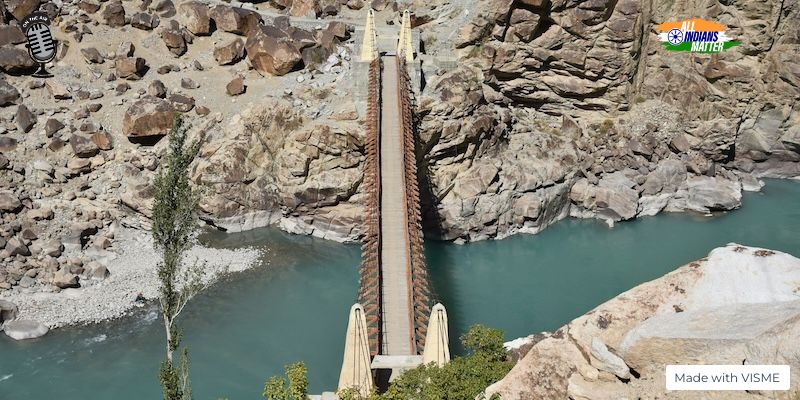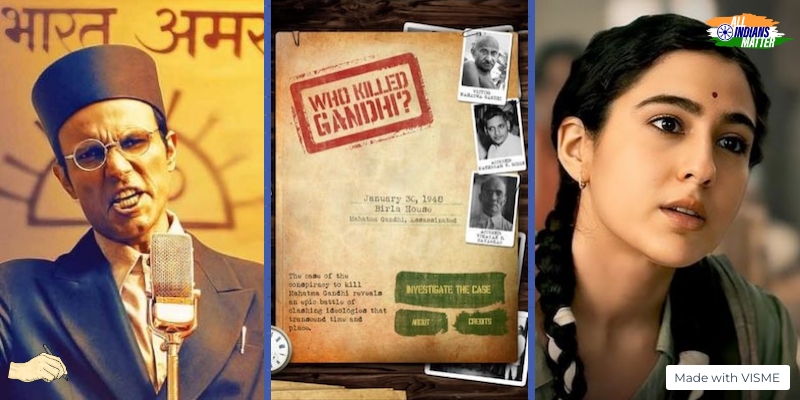Ashraf Engineer
March 19, 2022
Hello and welcome to All Indians Matter. I am Ashraf Engineer.
The Bharatiya Janata Party, or the BJP, emerged as the big winner in the recent Assembly elections. Retaining a majority in Uttar Pradesh, even though it’s a diminished one, was the big win and Prime Minister Narendra Modi has gone on record to say this is an indicator of how the nation will vote in 2024. While that may be premature, there’s no denying that the BJP has won four of the five states that went to the polls – Manipur, Goa and Uttarakhand, in addition to Uttar Pradesh – and that the Opposition has failed to make a mark. While Modi and the BJP made a big noise about development, the fact is that the campaign was founded on Hindutva and communal polarisation. This was the case especially in Uttar Pradesh. Here’s what we, as a nation, need to think about now that the results are out. The fact that prejudice, hate and humiliation of others has no impact on people’s votes is disconcerting. In fact, it seems to have solidified the vote. And what about the Opposition? Other than the Aam Aadmi Party, or AAP, which won Punjab handsomely, the Opposition seems to have gone into hibernation. Naturally, this isn’t good for our democracy and society. What impact it will have on India over the long term, time will tell. But, until then, the fight against the forces trying to corrode the idea of India continues.
SIGNATURE TUNE
Let’s begin with Uttar Pradesh. It is home to a fifth of India’s 1.3 billion people and has the highest number of Parliamentary seats. The BJP’s victory has come despite the government’s botched handling of COVID-19, the massive job losses and anger over the farm laws that the Union Government ultimately withdrew.
Needing 202 seats for a majority, the BJP won 255, 57 less than the last time but a comfortable majority nonetheless. Akhilesh Yadav’s Samajwadi Party came roaring back with 111 seats, 64 more than the last time.
The single biggest factor in the BJP’s victory was the consolidation of Hindu votes. Chief Minister Yogi Adityanath’s unapologetic Hindutva agenda worked, complemented by Modi laying the foundation stone of the Ram temple in Ayodhya. The party’s strong on-the-ground organisation was a key factor, with workers going door to door and the bigwigs making their presence felt strongly. Many Union ministers and Central leaders campaigned, ensuring that they covered each constituency between them. Yogi Adityanath himself visited at least 250. And Modi’s appeal remained strong despite the mishandling of virtually every issue – from the economy to healthcare.
Women voters, especially, seem to have favoured the BJP strongly. This was driven by the perception that law and order had improved vastly compared to the Samajwadi Party days. The distribution of free rations helped too, especially when it came to Dalits – who, traditionally, have voted for Mayawati’s Bahujan Samaj Party – and the Other Backward Classes, or OBCs, who have in the past usually voted for the Samajwadi Party.
As its second term unfurls, the BJP is expected to continue focusing on infrastructure and law and order. But expect a fresh pitch for temples in place of mosques at Mathura and Kashi.
In Mathura, the Shahi Idgah mosque located next to a temple is at the centre of a dispute with Hindutva groups claiming that it was built on land where Lord Krishna was born. They want the mosque to be torn down and a Krishna temple built in its place.
In Kashi, the Hindutva groups claim the Gyanvapi Masjid was built on the orders of Mughal Emperor Aurangzeb by demolishing a part of the Kashi Vishwanath Mandir in the 17th century.
These disputes hold the promise of continued polarisation for the BJP.
Other than that, the BJP had promised free electricity for farmers and incentives for sugarcane growers, women, the cooperative sector and two crore smartphones and tablets under the Vivekananda Youth Empowerment scheme. The fulfilment of these promises will be keenly monitored.
The UP election, more than any other, gives the BJP an advantage when it comes to the 2024 general election because the state sends 80 MPs to the Lok Sabha and the party had won 62 of those seats in 2019. As you can see, it’s the key to power at the Centre.
The win will energise its cadre and provide fuel for its ideology of division.
The victory also makes Yogi Adityanath the most powerful BJP leader after Modi and it will most likely impact the neighbouring states of Madhya Pradesh and Haryana and perhaps even Rajasthan.
Let’s look at Punjab now, where Arvind Kejriwal’s AAP got its second state government after Delhi and which has made the party a national player. It won an astounding 92 of 117 seats even as heavyweights such as the Congress’ Navjot Singh Sidhu, incumbent chief minister Charanjit Singh Channi, former chief minister Amarinder Singh and the Akali Dal’s Sukhbir Singh Badal lost their seats.
A key reason for the Congress’ loss was infighting. First, Amarinder Singh was replaced as chief minister and then a rift emerged between state party chief Sidhu and the new chief minister, Channi. Voters, disenchanted completely with the Akali Dal and with the problem-ridden Congress unable to make a mark, chose AAP and its chief ministerial candidate Bhagwant Singh Mann.
AAP’s promise to implement its ‘Delhi Model’, which focuses on education and health, was a big draw as was the promise of a fresh approach to politics. It was a mandate for big change.
As AAP begins to govern, in line with its commitment, it will raise the budgets for health and education. In Delhi, AAP has allocated 16% of the total budget to healthcare and 25% to education. This is good but Punjab’s fiscal situation is shaky. The state is highly indebted and over-leveraged. In 2021-22, its outstanding debt was 46% of the gross state domestic product. As a result of this, it is unable to support agriculture the way it should. AAP has promised not to burden taxpayers further, which means it will have to look for ways to cut costs and for newer revenue opportunities.
AAP will need to be quick on its feet on the economic front because there is a severe jobs shortage, which I had detailed in the pre-election episode of this podcast. Employment could well prove to be the decisive factor in the success or failure of its governance.
Drug addiction is the other burning issue. Punjab has a large border with Pakistan, making it susceptible to illegal drug trafficking. It will be a challenge to deal with this menace – one in which many political heavyweights are said to be involved.
This election gives AAP’s claim that it’s on the way to becoming India’s principal Opposition party some legitimacy. Between Punjab and Delhi, it now has a fighting chance for 20 Lok Sabha seats and a means to significantly increase its vote share.
Having already made a mark in local elections in Gujarat, AAP is projected to do well in the state’s Assembly elections later this year too. If AAP does well there, it won’t be a worry for the BJP alone. The Congress will feel that it is the one ceding ground.
Let’s shift focus to Uttarakhand now.
The BJP won 47 of the 70 seats, creating history in the hill state by returning to power with a comfortable majority. Uttarakhand is home to some of the most holy sites of Hinduism and so the BJP felt the election was a prestige battle. Its leaders campaigned hard in the constituencies and even through virtual rallies, seeking votes in Modi’s name and promising mega development projects oriented towards serving the pilgrimage sites. These included the Rishikesh-Karanprayag railway line and the Char Dham highway. In all, projects worth Rs 1.5 lakh crore were sanctioned for Uttarakhand.
So, post-poll, the BJP government is likely to focus on infrastructure and tourism and also on developing border villages as well as the Parvatmala Scheme, an ecologically sustainable transport alternative in place of conventional roads in difficult hilly areas. The idea is to improve connectivity and promote tourism.
Significantly, there was little talk of education, women’s safety, welfare, unemployment, inflation, farmers’ issues or even climate change – which Uttarakhand has suffered from greatly.
Now, let’s talk about Goa.
This was among the tougher battles the BJP faced. Eventually, it won 20 of the 40 seats with a vote share of 33.3% with many of the candidates being imports from the Congress.
The free rations programme during the COVID-19 pandemic seems to have swung women voters from poor households.
The anti-BJP vote was divided with newer players like AAP and Mamata Banerjee’s Trinamool Congress rolling out strong campaigns, which undoubtedly helped the BJP.
Employment was the leading election issue and it will most likely be the focus of the new government. One way of doing this could be restarting mining through new laws. A couple of years ago the Supreme Court had stayed mining in the state, wiping out thousands of jobs. Another way would be to boost tourism, which has long been the mainstay of the state’s economy.
Goa was where AAP and Trinamool saw a chance to expand their footprints and become true national players. In the event, AAP won only two seats and the Trinamool none. AAP, however, still emerged as a winner on the national stage with its win in Punjab.
Lastly, Manipur. The BJP won here, too, with 32 of the 60 seats. The reduction of insurgency-related activities was a clear win for the party. During the Congress regime under Okram Ibobi Singh, bandhs, blockades and extra-judicial killings were common. According to Union Home Ministry data, insurgency-related activities in Manipur witnessed a constant decline. From 233 cases in 2016, Manipur saw 167 in 2017, 127 in 2018 and 126 cases in 2019. Violent protests, stone pelting, tear-gassing and curfews have also reduced.
However, post-election priorities in Manipur are a little trickier than elsewhere. The Armed Forces Special Powers Act, better known as AFSPA, remains a hot-button issue. The people want it withdrawn but the BJP made no mention of it in its manifesto. People voting for the BJP doesn’t mean that they are fine with AFSPA. Sooner or later, the BJP will need to take a stand on it, which could make or break its government.
In addition, the party had promised infrastructure projects worth Rs 2,000 crore and the voters will keep an eye on their progress. Jobs, too, will be a major concern with Manipur recording the second highest unemployment rate in the North-East.
The Manipur election was considered a barometer of the region. It is said to indicate how all of the North-East will vote in 2024. If that is the case, then the BJP has a clear advantage in the 25 Lok Sabha seats of the region.
As you can tell, it was a saffron-tinted election. The BJP won four of the five states on offer and these wins could also alter the composition of the Rajya Sabha, the Upper House of Parliament, since it’s the states that vote for its members. But these are the states where the BJP traditionally does well or has a great chance. That’s not the case with much of the rest of India – especially the south, West Bengal and the eastern seaboard. It might look like a saffron summer but, don’t be fooled, there are many, many states where the BJP is not in power and a few where it is not even a player.
But let me return to the theme I started with: ideology and its tendency to sweep away the real issues. Will a Ram temple or others in Kashi and Mathura result in better health, education and more jobs for the people of Uttar Pradesh? There is no doubt that Yogi Adityanath’s handling of COVID was disastrous. Who can forget the sight of bodies floating down rivers or graves along riverbanks. How much governance and delivery was really there in UP over the past five years? Yet, the BJP won. Maybe there is such disillusionment that voters no longer look at politics and elections as a means to a better life and solutions to their problems. Perhaps elections are just an expression of identity and how much of state resources and power can be cornered for your own social group.
A large part of the credit for this scenario should go to the fractured Opposition. It has been clear for years now that its inability to band together is splitting votes and handing states and the nation to the BJP on a platter. Until it can do that, there is little hope of a turn away from polarisation anytime soon. The Assembly elections have proved exactly that.
The reporting for this episode was done by Apurav Shrivastava, Bhoomika Singh and Shitij Rao.
Thank you all for listening. Please visit allindiansmatter.in for more columns and audio podcasts. You can follow me on Twitter at @AshrafEngineer and @AllIndiansCount. Search for the All Indians Matter page on Facebook. On Instagram, the handle is @AllIndiansMatter. Email me at editor@www.allindiansmatter.in. Catch you again soon






